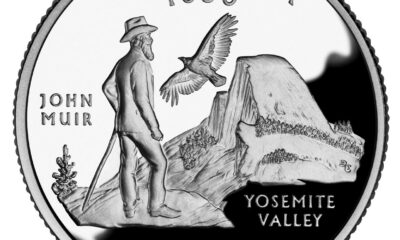Christianity Today
Assyrian discovery proves Bible again
Two weeks ago, a paper appeared in Near Eastern Archaeology describing a very salient find. Archaeologist Stephen C. Compton and his team claim – with much photographic evidence – to have discovered an Assyrian military base. This base is a siege camp, not a garrison – and in fact local evidence places it during Sennacherib’s war against the ancient Kingdom of Judah. This, then, is Sennacherib’s siege camp, where he lost 185 oversized battalions – or undersized regiments – of armed effectives in a single night. If this camp is what Compton says it is, then he has just proved one of the most controversial stories the Bible contains.
Role of the Assyrian Empire in Biblical history
The Assyrian and Babylonian Empires are nearly coincident in their land placement. In fact, Assyrians and Babylonians underwent at least one cycle of one conquering the other, only to fall victim to that other. For a long time, Kings of Babylon were actually Assyrian princes – until Nabopolassar, father of Nebuchadnezzar II, rebelled against Assyria and finally conquered it.
Until the rediscovery of ancient Nineveh in 1820 by Claudius J. Rich, no one believed that an empire called “The Assyrian” actually existed. That rediscovery changed everything. It also provoked a long-simmering dispute about the chronology of the Kings of Israel and Judah. Archbishop James Ussher, Primate of Ireland, stood on one side, and men like Edwin R. Thiele and William Albright on the other. At issue were attempts to synchronize the reigns of the successors of King Solomon (1015-975 BC) with those of Assyrian kings who claimed victory over one or more of these Hebrew kings, especially Ahab and his successor Jehoram (misidentified as Jehu, who destroyed the House of Omri into which Ahab was born).
The solution to that riddle is actually quite simple. The Assyrian Eponym Canon, said to have one name per year, was missing 52 names. Martin Anstey showed the spot from which someone chiseled out the missing names – most likely at the orders of Tiglath Pileser III.
This story, however, concerns an event happening much later than the reign of Tiglath-Pileser III.
Sennacherib, Rabshakeh, and Hezekiah
In 751 BC, a prince was born into the House of David under very unusual circumstances. King Jehoram of Judah, witnessing the humiliating quarantine of his father Uzziah, wanted to secure his ground with God. He did not want to end as his father had, stricken with a skin disease (which might or might not have been Mycobacterium leprae) and buried apart from the resting places of the Kings of Judah, with his ossuary or “bone box” bearing the first-ever biological hazard warning! So he proposed a child marriage – his son Jehoahaz to Abiah, daughter of High Priest Zechariah II. Jehoahaz was ten years old and Abiah maybe two years older at the time. What neither father could have predicted was that the randy prince Jehohaz would consummate the union while he and his bride were still children. Abiah gave birth to a son nine months later.
Hezekiah was only seven years old when his grandfather Jehoram died, and his father Jehoahaz became king. Jehoahaz had such overweening pride that he dropped the “Jeho” from his name, and called himself simply “Ahaz.” Which name simply means strength, and not God’s strength.
Ahaz shut up the Temple and actually imported the religion of a Syrian king he defeated in battle. He also practiced the cult of Molech, and sacrificed some of his children to it. But in 726 BC the thirty-six-year-old Ahaz granted his son a viceroyalty. Soon after, he was dead, and Hezekiah was king.
The Great Reformer
Hezekiah’s first royal acts were to reopen the Temple and commission a repair of its great doors. Then he ordered the priests and the Levites to start ritually cleansing the Temple. That process lasted so long that the new king had to put off Passover celebration for a month. He invited every tribe, including the tribes of the Northern Kingdom of Israel, to send representatives. After that massive celebration, he saw to the removal of every pagan altar, every Asherah pole, and every “high place.” He also smashed a bronze serpent the people had preserved as a relic of the Wilderness Crossing under Moses, after finding that people had created a cult around it.
But in addition to these reforms, Hezekiah suspended payment of a tribute his father Ahaz had agreed to pay the Assyrian ruler, Shalmaneser V. In the sixth full year of Hezekiah’s reign (after the year of his accession), Shalmaneser conquered Samaria, the Northern capital. Four years later, in 717 BC, Shalmaneser was dead. Hezekiah, at some point in that interval, dug a tunnel to the Gihon Spring to ensure Jerusalem’s water supply. Then in 717 BC, he suspended the tribute.
Four years later, Sennacherib, the successor (not necessarily immediate) of Shalmaneser, invaded.
The Assyrian invasion
Hezekiah took time both to repair certain fortifications that had fallen into disrepair, and to have his army properly trained. But after Sennacherib (as king or as Tartan to his father Sargon) captured seven cities, Hezekiah showed weakness. He stripped the Temple of its gold and silver to pay tribute to Sennacherib.
As everyone since Aethelred the Unready knows, once you pay Danegeld, you never get rid of the Dane. Sennacherib came back, with at least 185 units. The Bible uses the word aleph, plural alpayim, meaning a thousand, to speak of a military unit in those times. It calls the next smaller unit a “hundred.” Most likely, a hundred men formed a company (a century in the Roman Army). Ten companies, perhaps, made a regiment, larger than a battalion but smaller than a modern regiment. (And ten regiments made a division, or a “ten-thousand.”)
Saul has slain his thousands, and David his ten-thousands! 1 Samuel 21:11
The Assyrian officer Rabshakeh, Sennacherib’s chief of staff, delivered a propaganda speech worthy of “Tokyo Rose” or “Lord Haw-haw.” He displayed tremendous ignorance of the Hebrew faith – for instance, suggesting that the high places Hezekiah had removed were places pleasing to God. Hezekiah refused the surrender demand.
By then Sennacherib had moved his camp to Libnah, outside Lachish, the last city he had conquered. Knowing that Ethiopians were about to attack him, he sent a written surrender demand to Hezekiah.
Hezekiah’s prayer
Hezekiah took that letter, spread it on the altar in the Temple, and asked God directly for help. Shortly thereafter, the prophet Isaiah assured Hezekiah that God had heard everything. He also assured the king that Sennacherib would never enter Jerusalem, nor attack it effectively with any kind of weapon. Worth mentioning here is that even before the letter arrived, Isaiah assured Hezekiah that Sennacherib would return to his own city – where his own flesh and blood would kill him.
The day after that second conversation with Isaiah – concerning the written ultimatum – every armed effective in those 185 regiments died. The survivors woke up in Sennacherib’s siege camp to find only dead bodies surrounding them. Sennacherib, with other enemies pressing him, abandoned the siege and returned to Nineveh. Three years later, two of his sons, Adrammelech and Sharezer, murdered him in the Temple of Nisroch. They ran away, never to set foot in Assyria again, and Prince Esarhaddon succeeded to the throne. (Isaiah 37:36-38; see also 2 Kings 19:35 and 2 Chronicles 32:21.) Thus everything played out exactly as Isaiah said it would, even to Sennacherib’s own sons murdering him.
They’ve found Sennacherib’s siege camp!
Two weeks ago, in Popular Archaeology, Stephen C. Compton announced his triumph: he had found the siege camp of Libnah. He started with a bas-relief in Sennacherib’s palace in Nineveh, commemorating his capture of Lachish. By matching the landscape in this bas-relief to aerial photographs of the lands south of Jerusalem, Compton reverse-engineered a map of the area. Following that map, he found ruins similar in size and shape to the camp appearing in the bas-relief.
The camp was oval, in contrast to Roman siege camps, which are always rectangular. (Your editor saw at least one Roman camp at the base of Masada in 2011.) Moreover the site already had a reputation. Arabs called the ruins Khirbet al-Mudawwara, Ruins of the Camp of the Invading Ruler. The hill on which Compton found the ruins is named Jebel el-Mudawwara, Mountain of the Camp of the Invading Ruler.
Potsherds from the area confirm that it was uninhabited since the siege. The shards date from the date of the invasion, within a few years.
Compton’s article does appear in Near Eastern Archaeology, but it is accessible only to members of the American Society for Overseas Research.
The first mention of Compton’s find in major media organs was this morning in The Daily Mail. Why no media organ picked up on this story earlier, is impossible to determine. Jim Hoft at The Gateway Pundit picked up the story and reproduced several photographs of the bas-relief and the area.
Further Assyrian finds
As further testament to the strategic value of the site, the British, during the Palestine Mandate, built an ammunition depot on the hill in 1930. They named it Ammunition Hill, a name it carries to this day. During the 1948 War the Arab Legion captured it and built several defensive trenches. But in the 1967 War, Israeli paratroopers captured that hill, which now serves as a war memorial.
This is the first Assyrian siege camp ever discovered – and Compton expects to find more. In fact he says he already has found more – and used some of those camps to find other ancient cities. These would have been the cities the Assyrians used those camps to besiege.
No one knows to this day what wiped out those 185 regiments. Did a plague strike the camp? Or did an army of mice move in, chew through the soldiers’ bowstrings and shield straps, and leave them sitting ducks for Egyptian or Ethiopian attack? Compton’s findings provide no clues. But something happened in that camp to make Sennacherib go back home.
Lessons in faith
But this story definitely teaches us about faith – and not merely faith in the truth claims of the Bible. Notice that Hezekiah thought it expedient to buy off Sennacherib, by emptying the Temple treasury and stripping off Temple fixtures. That did not work. Indeed appeasement never works. Again: once you pay Danegeld, you never get rid of the Dane. Or: once you pay the Assyrian Tax, you never get rid of the Assyrian. Not by paying him off, you don’t.
But earnest prayer did the job. God calls us to prayer, not to appeasement of the wicked, whoever they are. CNAV urges everyone to look at Stephen Compton’s findings of that siege camp, remember that it held 185 regiments (ancient regiments, but still) of armed effectives, and remember also that after a single night every one of those effectives was a corpse. The Compton findings show that this battle actually happened. People of faith are experiencing their own Siege of Jerusalem now. If the modern Sennacherib is a doddering old dotard, they have even less reason to pay a cent in tribute. Rabshakeh has his analogs, too, in the shape of the legacy media, Trust and Safety Teams, et al. If the diminution of the Stanford Internet Observatory is any indicator, they are coming to the same sad end.
If God is for us, who can be against us? Romans 8:31
Terry A. Hurlbut has been a student of politics, philosophy, and science for more than 35 years. He is a graduate of Yale College and has served as a physician-level laboratory administrator in a 250-bed community hospital. He also is a serious student of the Bible, is conversant in its two primary original languages, and has followed the creation-science movement closely since 1993.
-

 Civilization4 days ago
Civilization4 days agoTrump’s Venezuela Gamble and America’s Shifting National Security Strategy
-

 Civilization4 days ago
Civilization4 days agoOperation Absolute Resolve: Anatomy of a Modern Decapitation Strike
-

 Civilization3 days ago
Civilization3 days agoTen Reasons To Cheer the Arrest of Maduro
-

 Civilization5 days ago
Civilization5 days agoTrump delivers deeds, not words
-

 Civilization1 day ago
Civilization1 day agoOne Fell Swoop: Lawsuit Eyes Death Blow to Racial Preferences
-

 Executive2 days ago
Executive2 days agoWaste of the Day: $1.6T in Wasteful Spending in Rand Paul’s “Festivus” Report
-

 Civilization3 days ago
Civilization3 days agoTrump’s New Executive Order on Space Has the Right Stuff
-

 Guest Columns2 days ago
Guest Columns2 days agoAdvice to Democrats Regarding Maduro Arrest: Resist Reflexive Opposition












